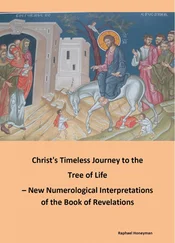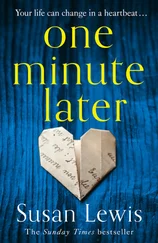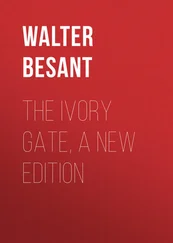But it was rejected and the consensus on full employment held. Other parts of the welfare state faced similar challenges in the early Conservative years. Education and health were subjected to repeated assaults by the Treasury under Chancellors ranging from Butler through Macmillan and on to Peter Thorneycroft with proposals ranging from excluding dental and ophthalmic services from the NHS to cutting a year from either end of compulsory schooling. Hard and long battles were fought in Cabinet and Cabinet committees on these issues, to the point where it is arguable that the Conservatives once in government were less plainly committed to the welfare state up to 1958 than they were afterwards – 1958 being the year Macmillan allowed his Chancellor, Thorneycroft, to resign rather than accept cuts which included a hospital boarding fee, removal of the family allowance from the second child and a string of other options for retrenchment of the welfare state.
Yet despite these alarms, the fact is that no effective challenge to universal, free secondary schooling was mounted and tax-funded higher education was to expand dramatically. The same applied in health, where again a universal service free at the point of use survived essentially unscathed, despite the introduction of some charges. On social security the Conservatives accepted and broadly maintained the universalism of Beveridge. The levels of benefit that were set came, over time, to see more people relying on means-tested benefits. But no universal benefits became means-tested and the biggest battles up to the 1970s were over how and how far to extend second pensions, not how to cut back existing provision.
None of this amounts to a true consensus – absolute agreement on what should be done about every area at every time. It was as much a matter of compromise as a true meeting of minds between the parties. What it does demonstrate, however, is a large degree of consensus in action, if not in thought, with its degree varying by time and by subject. Labour did not, for example, abolish private education, any more than the Conservatives introduced charges for hospital admissions. And while the construction of a second pension was a bitterly contested subject for twenty years, the final introduction of SERPS, the State Earnings Related Pension Scheme, was to prove in 1976 a bipartisan measure despite, by then, a decade of Conservative rhetoric about greater selectivity. Up to the 1980s the differences between the parties produced for the welfare state services an oscillation around a mean, rather than any great swing in one direction or the other. The trend was in favour of the social democratic ideas embodied by the institutions and services of the welfare state. In these circumstances, and held within pragmatic bounds, the differences between the parties need make no difference to the broad shape of welfare. Given full rein, however, the views of the Conservative right or the Labour left would lead to very different societies. 28
Michael Fraser joined the Conservative Research Department in 1946 and was only to lose his role in it, by then as chairman, when Mrs Thatcher became leader thirty years later. In 1987, as Lord Fraser of Kilmorack, he summed it up thus:
In a fundamental sense there must always be a good deal of common ground between the main parties alternating in government in a free society. When in power, after all, they are governing the same country, with the same history, people, problems and elbow-room, or lack of it, within the same world. Because the two main parties coming out of the coalition government in 1945 had already hammered out, not without some hard bargaining and horse-trading, the broad policies for dealing after the war with those social problems that had been identified and prepared for during the war on the basis of the Beveridge Report, the Employment Policy White Paper and the Butler Education Act of 1944, there was for a time an unusual degree of apparent unity of aim. To say, however, that the situation after 1945 amounted to a ‘consensus’ is a myth of more recent origin. No one thought that at the time. The real position was like that of two trains, starting off from parallel platforms at some great London terminus and running for a time on broadly parallel lines but always heading for very different destinations. 29
There were to be plenty of bouts of rhetoric – and occasional policy gestures – about what those different destinations were over the years. As early as 1950 the brightest of the new intake of Tory MPs, including Macleod, Angus Maude, Powell and, in a strictly limited role, Edward Heath, produced the One Nation pamphlet whose endorsement of the welfare state was tempered by important qualifications. In both parties there would be individuals and groupings who would argue for more extreme positions. But in terms of what was put to the electorate it would be the late 1970s and early 1980s before the differences of the destinations were spelled out in stark terms. Equally, it would take until the late 1990s and very changed economic circumstances, for some of the Conservatives’ ideas about targeting to triumph.
In 1945, in A. H. Halsey’s phrase, Labour inherited a Britain that was ‘by today’s standards … a poverty stricken country exhausted by war’. 30And yet by 1951, despite austerity, Cripps, rationing (which for a time after the war became even more stringent and did not finally end until 1954); despite utility furniture (which was virtually all that was available until 1949), the absence of bananas for five and a half years up to 1946, and the fact that the street lights did not go back on in Piccadilly until 1949 (four years after the war ended and a decade after they had gone out); despite all this, Britain was slowly becoming more prosperous. While the convertibility crisis, devaluation and the impact of the Korean War each shook the Labour Government’s confidence and set back planned spending, the overall record of the six years was of growth, rapidly rising production and an export-led boom. The 1945–51 era was also the period of long, hot, almost Edwardian summers, of Bradman, Compton and Edrich, of record football league and cinema attendances (a third of the population went to the pictures once a week, one in eight twice a week). 31It was the Britain of young Richard Attenborough playing the delinquent Pinky in the film of Graham Greene’s Brighton Rock and Dirk Bogarde murdering, in The Blue Lamp, the same Jack Warner who was to rise seemingly eternal on television as the avuncular Dixon of Dock Green. The 1940s and early 1950s was the Britain of those now grainy classics Brief Encounter and The Third Man, Ealing comedies like Passport to Pimlico - a cheerful revolt against rationing and bureaucracy – and The Lavender Hill Mob, and the boom in Butlin holiday camps. There was the ‘New Look’, ‘spivs’ – the first self-confident denial of the collective spirit the war was meant to have established – and endless ‘fiddling’ of coupons. Dockers discovered the strike weapon and turned themselves into the shock troops of the working class, producing the first manifestations of the ‘I’m All Right Jack’ philosophy. Britain had moved from the government-sponsored ‘Britain Can Make It’ exhibition in 1946 (dubbed by the wags ‘Britain Can’t Have It’, as almost all the goods displayed were for export only) to the muddy excitement (and controversy) of the Festival of Britain in 1951, built on a rubble-strewn bomb site with the Festival Hall symbolising a musical revival which included the reintroduction of the Proms and the rise of ‘Flash Harry’ (Sir Malcolm Sargent). Publishing boomed as paper controls ended, Animal Farm finally saw the light of day, Brideshead Revisited presented an elegy for a lost age and Graham Greene produced The Heart of the Matter and The End of the Affair. C. P. Snow started his ‘Strangers and Brothers’ sequence. Lumps of sculpture by Henry Moore and Barbara Hepworth started to be scattered approvingly across the landscape and Francis Bacon, Graham Sutherland and Stanley Spencer begin to gain a wider audience. The first national parks were established; the Pennine Way was planned. Legal aid emerged as a small and unobtrusive part of the welfare state, but one which when it started in 1950 covered almost 80 per cent of the population.
Читать дальше
![Nicholas Timmins The Five Giants [New Edition]: A Biography of the Welfare State обложка книги](/books/701739/nicholas-timmins-the-five-giants-new-edition-a-cover.webp)











